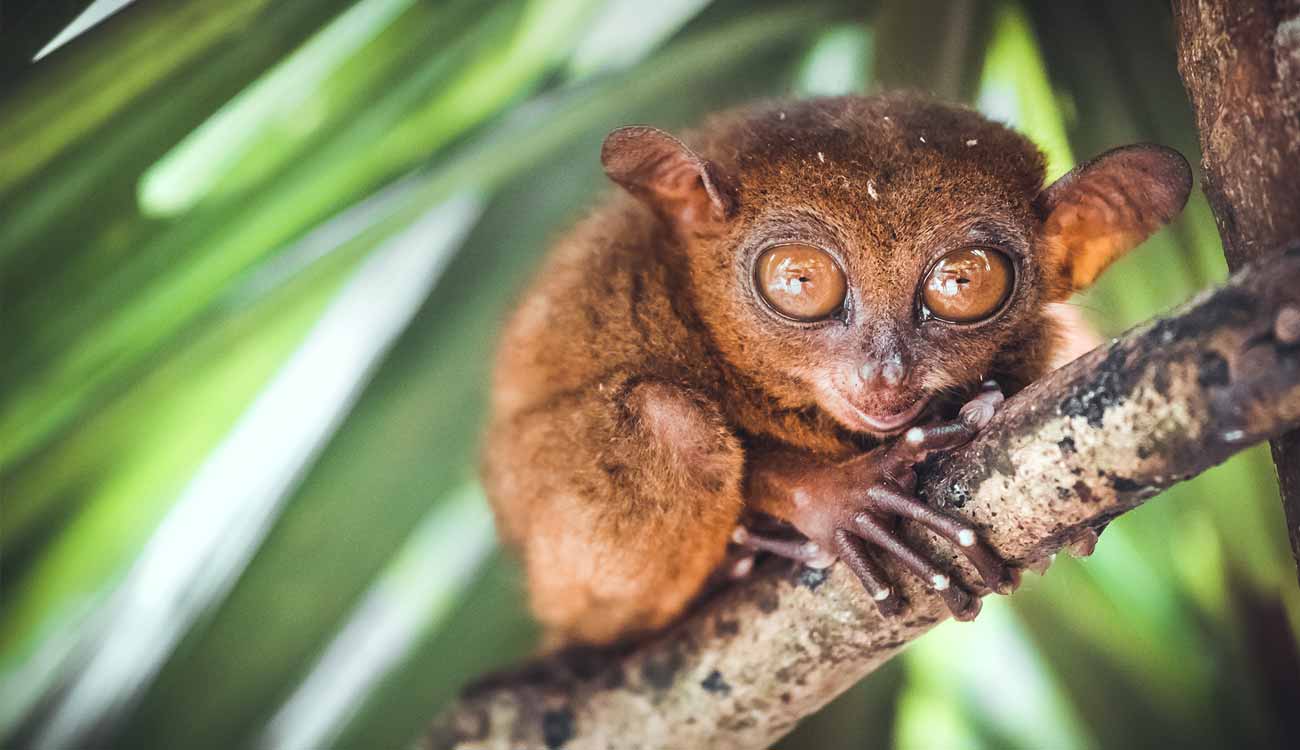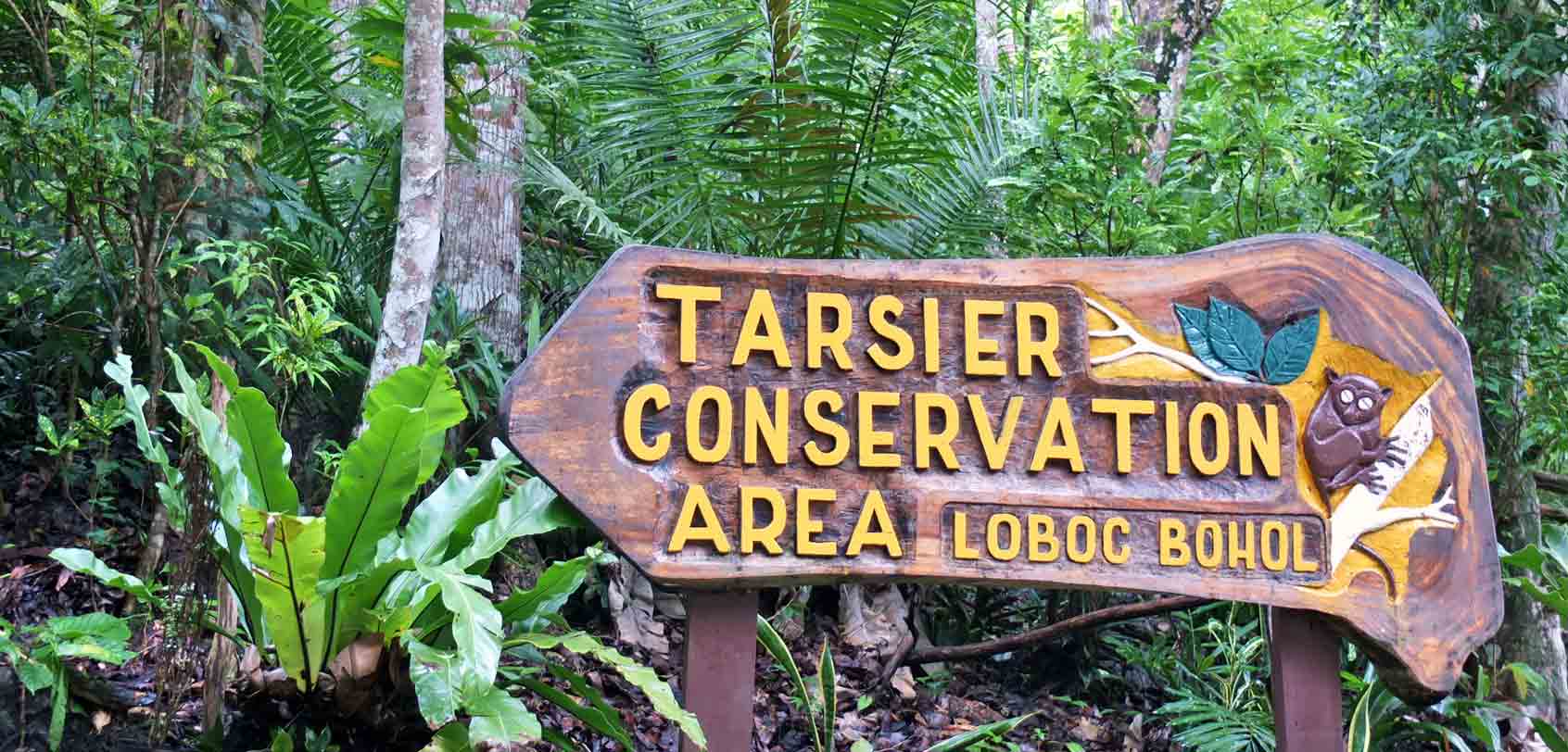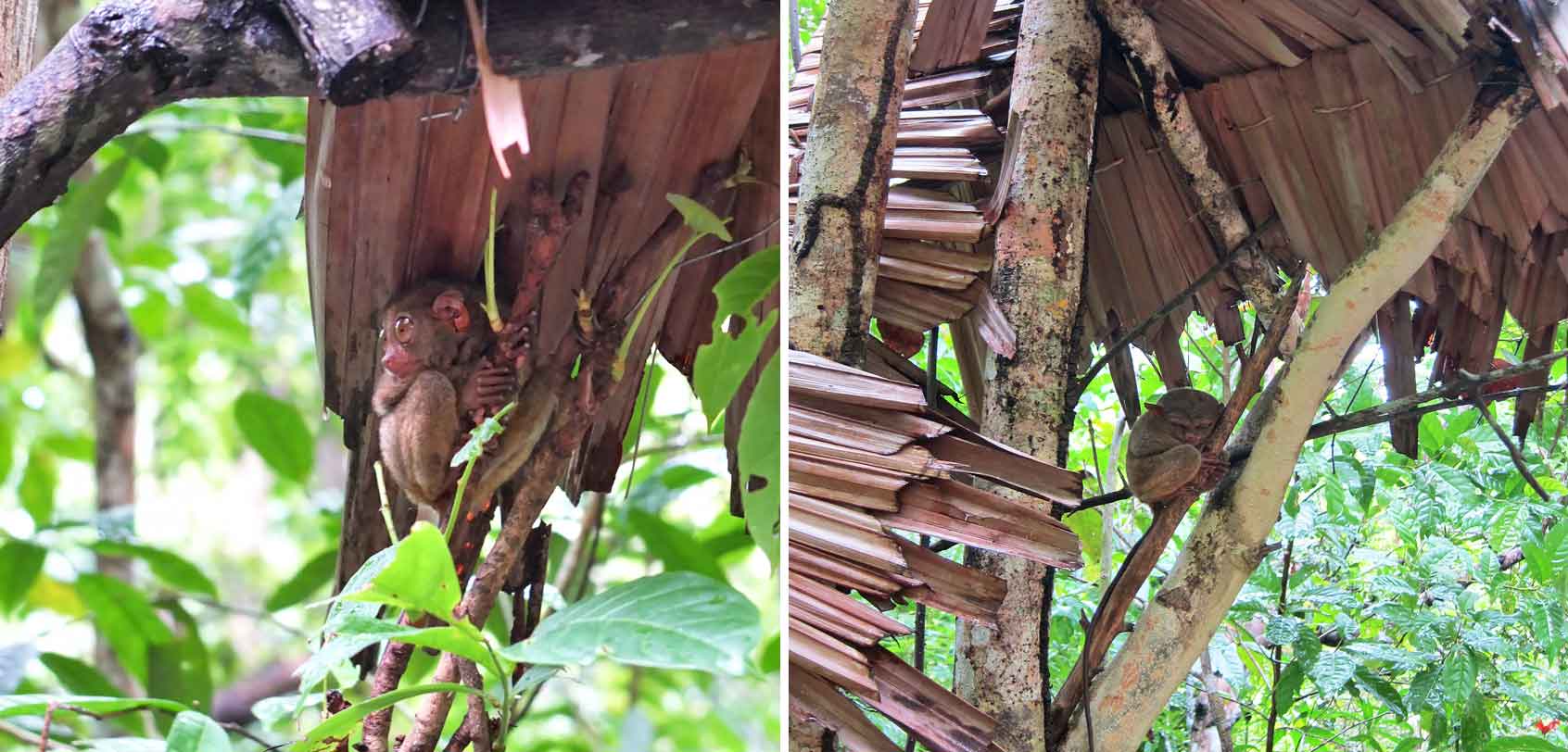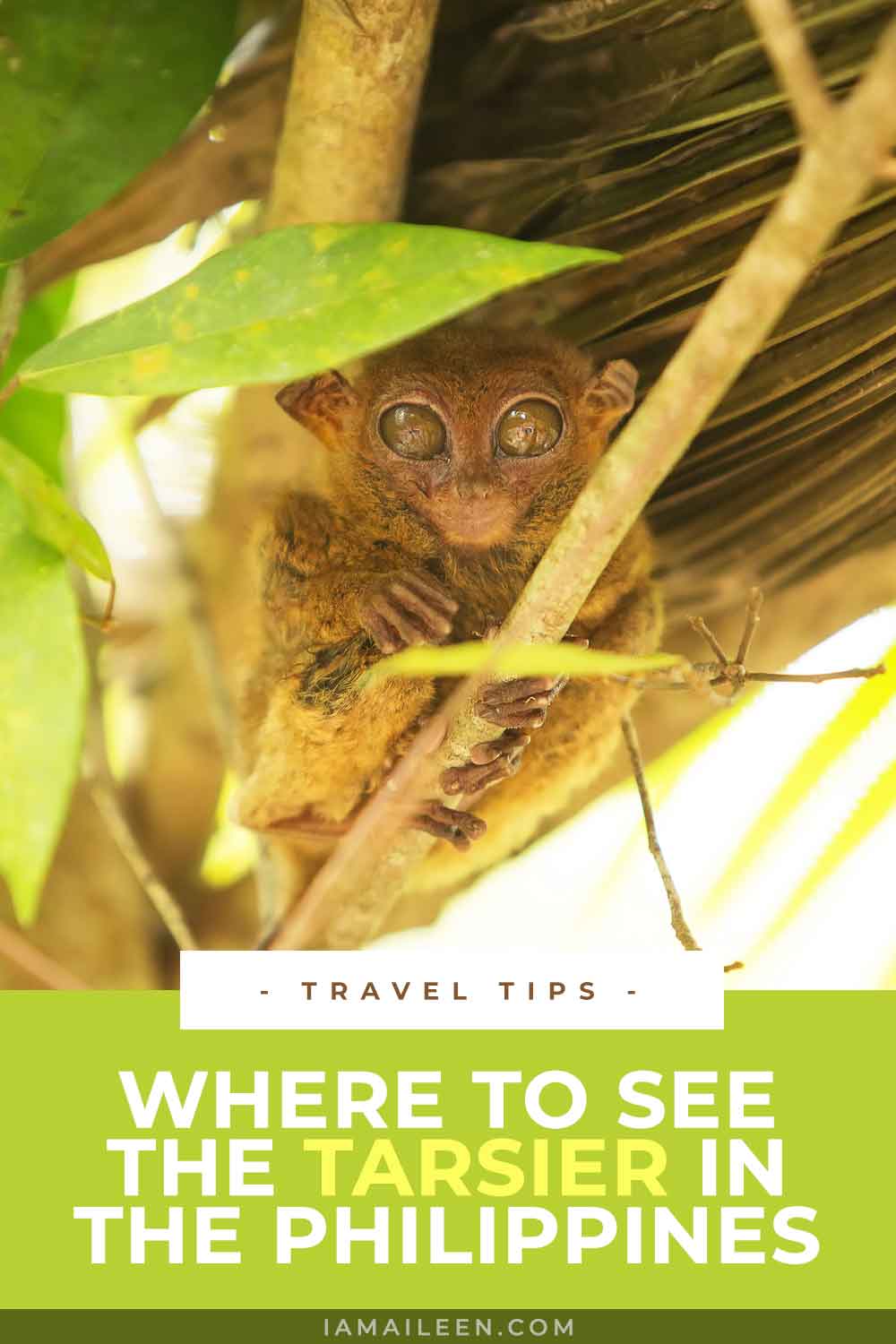Years ago, I was whisked away to Bohol by a friend and we had an amazing time in that magical island in the Visayas! …however, there was one activity we did that I realized was an unethical for-profit business, AND which I unknowingly supported — it was the time when we visited the Loboc Tarsier Conservation Area.
Let me give you some detailed context.
What is a tarsier?
A tarsier is a primate (e.g. apes and monkeys) that belongs to a 45-million-year-old animal family called Tarsiidae.
Their group used to be more widespread; but today, they are officially recognized as endangered species that are predominantly found in Southeast Asia such as the places of the Philippines, Malaysia, and Indonesia.
As you will see from the photo above, they hold a distinct characteristic: a small body with humngous eyes. (The way I see it, they’re like a cuddly-looking smaller version of Yoda… don’t you agree?)
For the rest of this post, we will focus on the Philippine tarsier which is mainly seen in Bohol, and here are some other interesting facts about them:
- Second smallest primate. The Philippine tarsier measures around 3 to 6 inches tall; thereby making it the 2nd smallest primate there is (next to the pygmy mouse lemur). Naturally, they are very hard to spot in the forests.
- The largest eye-to-body ratio in all mammals which gives them amazing night vision. During the day, their eyes can constrict until their pupil will only look like a thin line; in the dark though, their pupil can dilate and fill up their entire eye!
- Fixed eyes. Their eyes are fixed into their skull so they cannot turn their eye sockets, instead, their neck allows them to rotate their head 180°!
- Solitary, shy, and territorial. Leading a mostly hidden life, a male tarsier needs at least 6 hectares of space, and a female tarsier needs at least 2 hectares. If other tarsiers come into their territory, they will fight for it, and it can often lead to the death of the other.
- Nocturnal. They become active only at night and it is only during this time that they will cross paths with other tarsiers when they hunt for their food — mostly insects.
- Arboreal, meaning that they love to cling vertically to trees and branches as they leap from branch to branch.
How did tarsiers become endangered?
Mainly because of these threats:
- Habitat destruction. The dwindling number of the forests which are the tarsiers’ natural habitat had truly posed a significant threat to their survival.
- Human hunters & pet trades. Tarsiers don’t do well when in captivity since they can easily and quickly turn suicidal as they try to break free: they will willingly bash their heads in, which leads to their death.
- Too much noise, sunlight, and physical contact from foreign things (us humans) can also over-stress them, which then leads to suicide as well.
- Predators. Other than humans, some of their natural enemies are house or domesticated cats, snakes, owls, large birds, and other smaller carnivores.
In order to help preserve the Philippine tarsier, a law has been passed that made it illegal to own a tarsier; unless when it is for educational and conservation purposes.
Why Avoid Loboc Tarsier Conservation Area?
The Loboc Tarsier Conservation Area is a popular destination among tourists mainly because of its close proximity to Bohol’s famed spots like the Loboc man-made forest and the Chocolate Hills.
It is also often a part of the packaged tours on the island, hence the reason why this became one of our experiences during our grand tour in Bohol. Basically… my tour in the Loboc Tarsier Conservation Area was interesting, at first — after all, it was my first time to see a tarsier!
But moments after we finished our tour, I had the gnawing realization that they were housing tarsiers in such poor conditions.
And as I did further research days after our trip, I even found out that they are NOT an official tarsier sanctuary!
» They are a non-official tarsier sanctuary
The Philippine Tarsier Foundation is the main non-profit private organization in the Philippines that seeks to protect the Philippine tarsier. It has strong support from the two leading ecotourism organizations in the country: DENR (Department of Environment and Natural Resources) and DOT (Department of Tourism).
With this in mind, here’s a NEWSFLASH for you: the Loboc Tarsier Conservation Area is NOT an official sanctuary area, and it is NOT supported nor run by the Philippine Tarsier Foundation.
This was pretty apparent anyway because…
» The tarsiers are kept captive in poor condition
I have heard that the Loboc Tarsier Conservation Area used to be smaller and cages tarsiers; but at the time of my visit, they have prided themselves for the larger space that they have and how their tarsiers are not “caged“.
However, no matter what they say or do, the fact remains that the tarsiers are held captive in this small viewing area. There may not be visible high walls to keep them in their land, but it’s apparent how they are caged before every viewing day.
You see, they have a pathway surrounding their compound which leads to certain tree spots where you can see the tarsiers. Obviously, they are placed there everyday for the tourists to see. Just look at the makeshift “roof” that each of these tarsiers has!
That’s not natural — unless all these tarsiers built them or something… Ha – haaaa, nope.
They seemingly can’t roam around either (I bet they control them so they don’t escape) and all of them were wide awake (remember how they should be nocturnal).
This is really no surprise since other than the factors I’ve already mentioned, the branches that they are in are somehow quite close to the tourists — to give people a better chance to take photos of them of course.
Hence, the tarsiers are basically subjected to human presence and noise for almost every minute and THIS would surely cause them constant stress!
Stress = high death rate = less chances of reproduction.
If I may add, these tarsiers who are perched on their own branches were in such close proximity to one another, which then goes against their need for ample territorial space. (This place was a small area after all.)
Naturally, because of these reasons and more, I do NOT recommend visiting the Loboc Tarsier Conservation Area. (Additionally, I’m just wondering why this area continues to exist because by law, owning tarsiers is illegal unless it’s for educational and conservation purposes. Though this place may claim itself as a conservation area, their conditions are far from ‘conserving’ the tarsiers — so I beg to differ.)
What is a Better Alternative?
If you still want to see the endangered Philippine tarsiers, I suggest that you rather visit the official place run by the Philippine Tarsier Foundation: the Tarsier Research and Development Center in Corella, Bohol (also called The Philippine Tarsier and Wildlife Sanctuary and you can see their reviews on TripAdvisor).
NOTE: To help you differentiate, the unethical one is located in Loboc; whereas this official sanctuary is located in Corella.
Here in Corella, you can choose to do 2 things:
- See and observe the tarsiers in an enclosure
- Rest assured, the net enclosure is only where they keep the tarsiers during feeding, breeding, and display. It’s actually a free environment and it’s only enclosed to keep possible predators (cats, etc.). Besides, the tarsiers can jump out of it whenever they want to.
- You are allowed to take pictures without flash but only quietly so as not to disturb the tarsiers who are asleep.
.
- Search for the tarsiers in their natural habitat through the Tarsier Trail
- A pathway that goes through a 134-hectare area of wilderness — you can hike through it with a guide in order to try and catch a glimpse of a Philippine tarsier in the wild (while also acquainting yourself with the local flora and fauna).
How to Get to the Philippine Tarsier Foundation?
This Tarsier Sanctuary is located 14 km from Tagbilaran (the provincial capital of Corella) and 20 km from Loboc. To get here, you can take a bus that goes to Sikatuna. From there, you just need to walk in until you see their ticketing office.
You can also ask your hotel for directions. Just remember to stress that you want to go to the one in Corella and NOT Loboc.
Website: [link]
Google Maps: [link]
Opening Hours: 9.00 to 16.00
Ticket Price: Php 50 ($1) guided tour inside the enclosure
Time for Visit: 30-60 minutes
Rules: No flashes. Keep your voice low. NO touching of the tarsiers. Don’t stay too long in one tarsier (5 minutes will do).
Trail: As it is a natural environment, expect the trail to be muddy when it rains. Umbrellas are not allowed if it rains so bring a raincoat if ever.
Trivia: You can also volunteer here! It will be a great experience to learn more about tarsiers.
Looking for other activities?
Here are the top things to do in Bohol!
• • •
Booking Essentials
TIP: It’s a good idea to crosscheck the prices with other popular travel insurance providers like World Nomads and HeyMondo (as my reader, you get 5% off)!
.
However, take note a travel insurance’s affordability typically means lesser coverage; so please always ensure that you read the fine print in order to decipher which travel insurance company is the right fit for you and your trip!
Looking for more travel tips for the Philippines?
Check out my other detailed Philippine travel guides!
• • •
Overall
As travelers, I find it imperative for us to exercise responsible tourism. Therefore, I urge you to take the alternative and avoid supporting businesses — such as that of the Loboc Tarsier Conservation Area — that do not contribute to the well-being and survival of endangered tarsiers.
I know that we all want to be “up-and-close” to such animals who are unique, and that’s fine. But only for as long as we make the conscious effort to ensure that our actions are not contributing to the problem, but rather contributing to a solution.
That being said, I also hope that you help spread this to others who are planning to visit Bohol so that they can make an informed choice! Do let me know too if you happen to know of any updated information about this issue.








The tarsiers eyes are memorizing I just can’t stop looking at them. It is sad that they are kept in bad conditions. It is awesome that you are sharing this information, so people can make an informed decision on whether they should boycott the area.
I simply want to inform others so they’ll avoid the same mistake that I did. Thanks Emma for supporting the cause!
The fast facts you mentioned about tarsiers are truly surprising. I haven’t been in Bohol, but I can really see your point why we need to boycott that area. We must be responsible tourists who support the welfare of animals.
I’m glad you agree Miles! A lot of people are still led to that place though, but at least, I hope this article reaches to some more people who will also spread the word.
Thank you for sharing this information on the Loboc Tarsier Conservation Area. I had no idea! As a tourist I think we often get sucked into these “tourist traps”. I know if I am ever in the Philippines I will be sure to visit the Philippine Tarsier Foundation – the Tarsier Research and Development Center in Corella, Bohol instead.
Thanks Melissa! And yeah, that’s true. We need to be more informed. :)
I’ve been to Loboc and I’ve also seen tarsier there. Yung binista naming tarsier nun hindi sa Tarsier Conservation Area. Merong parang maliit lang na lugar dun na parang alaga lang nila yung mga tarsier tapos nasa mga sanga yung tarsier. At masasabi kong, uo nga hindi yun ung natural habitat nila. Nakakasad neto lalo na sa mga katulad kong tourist na walang idea. Thank you so much for this post.
Aw thanks for sharing Neri! I think it’s safe to assume that unless those places were in the wild, then those tarsiers were “placed” there and caged after the day ends. It saddens me to hear that this happens still so I really want to inform others. I was also someone who had no idea before so now I want to spread the word. Thank you!
I haven’t been to Loboc yet, because my relatives have been discouraging me to. I actually wanted to just try the cruise, but they say there’s nothing much to see around, and later on I found out that there’s a tarsier conservation there. I’m not sure, but maybe they’re hiding it from me? Haha
But I was able to see a tarsier in Sagbayan peak, unexpectedly. We went there after our trip to Chocolate Hills because Sagbayan peak is also a popular park, or something. There’s one “dome” there with butterflies and plants and we also saw one or two tarsiers that time. I felt sad for them, being caged, and yes, they’re awake! :(
I agree with what you said, we all love to see different animals and take photos of them, of course, but we have to be aware and informed before we take actions. People should do research first, because there are always alternatives naman.
Haha! I’ve actually tried the cruise, and yeah it’s somehow a very ‘touristy’ activity — but I loved the buffet LOL (especially since I was sooo hungry at that time) haha so I had a great time.
Anyhow, that’s so sad! The Philippine Tarsier Foundation has been active in the past years of freeing caged tarsiers in Bohol (there used to be tons of them by the river but they’ve been freed, thank goodness) yet indeed, there are still those who manage to still do it. :(
Overall: I’m glad you agree! We really need to practice responsible traveling. I also had an experience with elephants in Thailand which I thought was ethical (since they didn’t perch chairs on their backs) — HOWEVER, the fact that they were still able to follow the people’s commands (raising their trunks and mingling with us) exposed me to the fact that the elephants were still being ‘trained’ (a process that’s very cruel which is called ‘breaking their spirit’). -sigh- So I’m never supporting that place again. It was called Patara Elephant Farm and the most ethical place in Thailand was called as Elephant Nature Park.
I also wonder about the elephants in Thailand. But since I am not familiar with their culture, I am thinking if it is just how they really practice it? Gaya ng mga kabayo sa kalesa at kalabaw na nag-aararo dito sa Pinas.
That might be; but still, the process of ‘breaking the spirit’ of elephants is a tad too cruel so the majority of the community don’t support it. If you ever want to be involved in a responsible elephant farm in Thailand, check out Elephant Nature Park :)